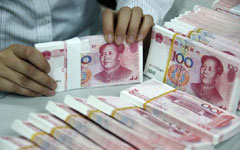Of course, directional drop quasi is a quantitative policy instrument, but of small effect. If issues such as the lack of further reform of China's interest rate market, the distortion of financial market price mechanisms, and the lack of a fundamental transformation of the investment-oriented real estate market exist, directional drop quasi will have a limited ability in enhancing the service for the real economy. Problems in the Chinese financial market now are mainly caused by the central bank's excessive use of the quantitative policy instrument instead of a flexible use of price instruments. Therefore, if a directional easing policy is set as a usual instrument, it will still have a limited effect.
 |
 |
In 2013, the government started to regulate these financial markets. Particularly in 2014, relevant documents were issued targeted at the interbank market. They demanded regulation of the complicated and ever-expanding financing chain, bringing all the non-standard banking businesses under supervision so as to clear away the unnecessary financial "channels" and "bridge" links, shorten the financing chain, and reduce the costs of financing and potential risks in the financial system.
Third, optimizing financing structures involves how to guarantee the flow of bank credit into the real economy and government-supported industries as well as controlling the flow of credit to the industries with overcapacity. This policy is expected to have quite a big impact on China's real estate market, which is in the process of adjustment.
These three aspects will be the focus and trend of the central bank's monetary policy in the second half of the year.
The author is a researcher at the Financial Institute of the Chinese Academy of Social Sciences.
